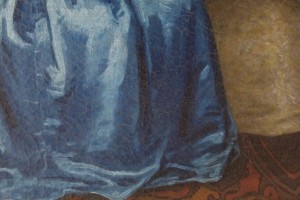Recently I spent time looking through the archives.* I was curious about the writer Henry Peacham – his work on rhetoric has had a large influence and in searching the collection, I discovered he also wrote on drawing and painting. In The Gentleman’s Exercise (1694) he covers a range of topics from exercise to illness, from drawing to recipes for creating color for painting.

Reading his descriptions on how to mix materials to create array of colors I came to a simple realization: when we look at a painting we are often looking at the unique mixing of a particular color. The museum then is not only a place of visual meaning, but also a site of visual making by particular human agents located in a specific time and place. Color here is linked to a person and a composition, not a digital formula. A museum hums conversations of color. In the age of screens (even with retina), paintings –as acts of color making –are translated in a plane of sameness. Machine color is amazing. Human color authentic, located, aging, limited.

When you have a chance, go to the museum. More than ever, we need to see the physical design of color. Composition and color are structural markers similar to narrative devices. What colors are used for somber, gleeful, mysterious, industrial moments?

Color is not singular, but plural. When we say ‘blue’ we have a host of blues. Seeing these blues in a museum expands our visual terrain. A place where the constant play of context, space, light, and size of the canvas affects our seeing. A direct physicality emerges beyond the reach of mediated machines, like this one. The museum space fuses with our perception, our day and our space. We don’t just see once.

We can see blue on our screens. Yet, do we ever think of making blue? With making comes choice, volition, effort, trial and error, quality of material products: the variables increase, and now as we look we can see that artists have a certain color design, a certain way of using the canvas, the brush, the elements. We realize that a color like blue is also a multifoliate human narrative.
*See Rare Books and Manuscripts and the Reference Library and Archives for more information.
All photos were taken on April 16th, 2014 on the fourth floor. For a wonderful history of the color blue, see Blue: The History of a Color by Michel Pastoureau (2001).
–James Shivers
